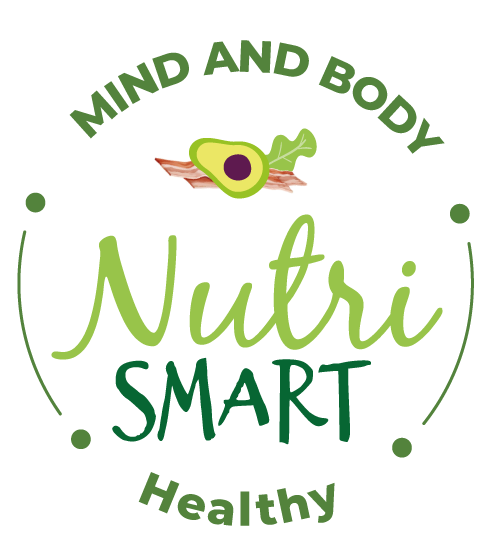
Introduction to Pain and Inflammation
Pain is a complex and unpleasant experience typically associated with potential tissue damage—something no one wants to feel. However, it functions as an alarm system, signaling that something in our body requires attention. Often, pain is accompanied by inflammation, which is a normal response from our immune system. While we commonly associate inflammation with something negative, it actually plays a crucial role in protecting and repairing damaged tissue. The issue arises when inflammation becomes chronic and persists over time.
Although we often assume that pain stems from physical injuries or infections, this isn’t always the case. Pain and inflammation can also be triggered by poor lifestyle and dietary habits. When inflammation becomes long-lasting, it can negatively impact quality of life by contributing to chronic diseases and affecting our mood.
Understanding Inflammation
Pain usually begins with inflammation, which is the body’s natural response to aggression, such as infections or injuries. Importantly, this reaction is a vital part of our immune defense. For instance, when we have an infection like pharyngitis, the body reacts by producing inflammation to fight it off. Similarly, in the case of a sprained ankle, the affected area becomes inflamed.
So, what is the true purpose of inflammation?
- Eliminating damaged tissue: This includes clearing out bacteria, immune cells that died during the fight, or damaged muscle fibers.
- Delivering nutrients for healing: Whether it’s an infection, cut, or bruise, the body increases blood flow to deliver the necessary components for repair.
- Protecting against infection: In the case of wounds, inflammation acts as a barrier, reducing the risk of infection.
Thus, inflammation itself is not harmful—it plays a vital role in healing. The problem, as mentioned, begins when inflammation becomes chronic, negatively affecting both health and quality of life.
How Inflammation Impacts Your Health
Chronic inflammation is a contributing factor to many diseases, such as diabetes, cancer, and arthritis. It can damage the body over time and also influence mood, hinder fat loss, and, of course, cause pain. For these reasons, finding ways to reduce inflammation is always a wise strategy.
Inflammation Without Injury or Infection
Inflammation and pain don’t always result from visible injuries or infections. In fact, your daily habits and diet can promote inflammation, especially when your lifestyle is unhealthy.
Some common symptoms linked to high levels of inflammation include:
- Weight gain, particularly around the waist
- Fatigue and low energy
- Brain fog, trouble focusing, and mood changes
- Insomnia
- Muscle and joint pain
- Digestive issues such as bloating, constipation, or diarrhea
- Higher risk of skin problems, allergies, and minor infections
Effective Strategies to Reduce Inflammation
Now the important question arises: How can we effectively reduce inflammation?
1. Weight Loss
Losing weight is one of the most impactful steps toward overall health. If you are overweight, shedding even 5–6 kilos can significantly reduce inflammation and pain. Research shows that losing just 5 kilos can relieve joint pressure nearly as much as losing 20 kilos.
2. Limit Anti-Inflammatory Medications
While drugs like ibuprofen or naproxen can be effective, they carry risks, especially when overused. Frequent use may reduce the body’s natural ability to manage inflammation and even slow down healing by reducing blood flow. Therefore, natural alternatives should be prioritized.
3. Improve Your Diet
Poor dietary choices increase inflammation. Here’s what you can do:
- Avoid processed vegetable oils like canola or soybean oil, and steer clear of margarine.
- Eat more foods rich in omega-3 fatty acids (e.g., seafood, nuts) instead of omega-6.
- Increase your intake of fruits and vegetables—especially leafy greens and low-glycemic options like berries.
- Use anti-inflammatory spices such as turmeric (tip: combine it with black pepper to boost absorption).
- Cut down on refined carbohydrates, which spike insulin levels and promote inflammation.
4. Stay Physically Active
Sedentary lifestyles contribute to inflammation. In contrast, even 20 minutes of moderate activity a day can reduce inflammation by up to 5%. Exercise stimulates the sympathetic nervous system, helping to reduce both inflammation and pain.
5. Prioritize Sleep
Sleep is essential for health and recovery. A poor night’s rest increases pain and inflammation because the body perceives it as stress. Aim for at least 8 hours of high-quality sleep each night.
6. Use Temperature as a Tool
Temperature therapies can also help. Cold exposure, such as ice baths or cryotherapy, is known to lower inflammation—but should be used moderately. On the other hand, saunas may reduce inflammatory markers. Emerging technologies like red and infrared light therapy may also aid in reducing pain and boosting energy by supporting mitochondrial health.
7. Consider Anti-Inflammatory Supplements
In addition to lifestyle changes, certain supplements can assist in managing pain and inflammation:
- Curcumin (from turmeric): Especially effective when combined with black pepper, potentially as effective as ibuprofen.
- Omega-3: A critical anti-inflammatory nutrient often lacking in modern diets.
- Boswellia: A tree resin helpful for joint pain and arthritis, especially when combined with glucosamine and type II collagen.
- Coenzyme Q10: Beneficial for widespread pain, such as in fibromyalgia.
- Serrapeptase: An enzyme that has shown effectiveness in reducing post-surgery pain.
8. Try Binaural Beats
Binaural beats use two tones at slightly different frequencies in each ear, which the brain interprets as a single tone. Specifically, theta wave frequencies have shown promise in reducing pain perception in chronic pain patients. While the exact mechanism remains unknown, it likely alters the brain’s perception of pain rather than the inflammation itself.
There are many free resources available online, and all you need are headphones. Importantly, this method comes with no side effects, unlike medications or supplements.
Small Changes That Make a Big Difference
Here’s a summary of actionable steps you can start today to reduce inflammation and pain:
- Revise your diet: Reduce refined carbs and processed oils, and increase omega-3s, fruits, and veggies.
- Add anti-inflammatory spices and supplements: Turmeric, omega-3s, Boswellia, CoQ10, and serrapeptase.
- Get moving: Aim for at least 20 minutes of daily physical activity.
- Sleep well: Prioritize 8 hours of quality sleep each night.
- Use temperature therapies: Try cold exposure, sauna, or light therapy.
- Explore binaural beats: Use this tech to naturally reduce pain perception.
By gradually incorporating these strategies, you can significantly improve how your body handles pain and inflammation—ultimately enhancing your quality of life.
